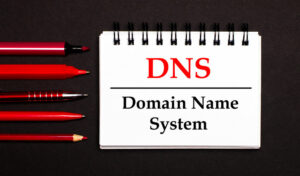For many people, using a Dynamic DNS could be really advantageous. Put simply, this DNS service is a method for automatically refreshing new IP addresses. We’ll look at what Dynamic DNS is and how it works in more detail in this article.
Dynamic DNS – What does it mean?
Dynamic DNS, also known as DDNS, is a very useful service that allows us to keep the DNS constantly updated, with the correct IP address, even when the Internet Protocol is changing. Commonly, these kinds of resources include a Web server, a Web camera, or a computer for remote control operation.
The Domain Name System (DNS), as we already know, is a user-friendly and simple-to-use system for associating domains with their IP addresses. Unfortunately, these Internet Protocols are running out on a daily basis. Internet Service Providers (ISPs) are attempting to avoid this scarcity by utilizing dynamic DNS in particular. DDNS automatically logs changes from dynamic IP addresses. This ensures that domains remain connected to the appropriate Internet Protocols.
How does it work?
Most often, to take advantage of a dynamic DNS, you need to look for a provider. Then when you find it, you need to install their software on the host computer or on the router. When the IP addresses provided by the ISP are changed, this software connects with the DDNS service provider. As a result, the dynamic DNS provider updates the A record or AAAA record to reflect the changes, resulting in near-instantaneous updates.
In addition, a dynamic DNS service is incompatible with networks that use static IP addresses. This is because the domain name does not need to be asked again after the IP address is given the first time. The reason is straightforward: static IP addresses do not change.
Why do you need to benefit from Dynamic DNS?
There are many advantages. Some of which are as follows:
- It keeps you online. It will reduce downtime by automatically updating A record or AAAA record. As a result, the gadgets or services will continue to be accessible via the Internet.
- Incredibly simple. It only has to be set up once – for example, IP cameras for surveillance. You’ll need to configure your router’s Dynamic DNS service by heading to settings and entering the user and password.
- Static IPs are more expensive. If you have multiple devices, it will be far more cost-effective to pay for only one DDNS service. It could be costly to pay for each static IP address.
Conclusion
We can conclude that it is a long and complex explanation for a very simple service that keeps millions of people connected to their devices all over the world. Remember that the DDNS method is useful in the case of dynamic IP addresses. The Dynamic Domain Name System (DDNS) is a very helpful technology that can save you a lot of time and money. It may be the only logical solution to a problem in some cases.










Be First to Comment